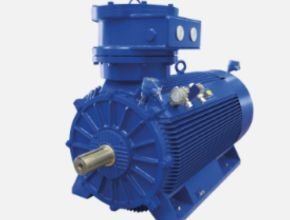What Is Oil & Gas?
The process of extracting natural gas and oil from wells and converting them into finished petroleum products that are suitable for human use is known as oil and gas production. Beginning with site discovery and continuing through actual extraction and delivery to enterprises and the general public, oil and gas production involves a series of methodical procedures.

One of the biggest industries in the world and a major contributor to the global economy is the oil and gas sector. However, it may also be extremely brittle and volatile, just like any other sector. There is a request to increase oil and gas output in order to avert shortages and future price increases, given the recent events involving two major oil companies.
History of the Modern Oil Industry
Energy has been a major facilitator of living standards throughout human history, even before the contemporary history of the oil and gas sector began. In the agricultural age, people used wood to cook and stay warm in order to live. For centuries, wood was the primary fuel used worldwide in addition to being used as a building material. The transition from an agricultural to an industrial economy was signaled by the development of the first modern steam engine at the start of the 18th century.
Coal swiftly overtook wood as the favored fuel for steam engines, allowing for a significant expansion in the scope of industry. In addition to being less expensive to manufacture and, despite its mass, easier to distribute, a half-ton of coal provided four times as much energy as the same quantity of wood. While steamships traveled the oceans, coal-fired steam locomotives significantly cut down on the time and expense of inland transportation. Coal-powered machinery reduced physical labor while enabling productivity gains.
Oil replaced coal as an energy source around the turn of the 20th century due to new technology and environmental concerns. It’s interesting to note that, despite the fact that women were not yet granted the right to vote, American ladies’ groups played a significant role in promoting legislation that would have improved air quality and lessened the heavy smoke produced by burning coal.
Technical Features
- Series: D_C – D_X – D_K – D_Y
- Power: Up to 925 kW
- Voltage: Up to 690 V
- Atex Execution: 2G Ex dB IIB T4 Gb (D_C), 2G Ex dB eb IIB T4 Gb (D_X), 2G Ex dB IIC T4 Gb (D_K), 2G Ex db eb IIB T4 Gb (D_Y)
- Frame: 160 to 450
- Pole: 2 to 8
- Frequency: 50 Hz, 60 Hz or variable speed
- Protection Degree(IP): 55, 56, 65, 66
- Cooling Method (IC): 411, 416
- Ambient Temperature: -55°C to +60°C
- Enclosure Material: Cast iron
- Bearing: antifriction, sleeve
- Applications: Centrifugal & reciprocating compressor, Conveyed system, Cranes, Extruders and expanders, Heat exchangers and blowers, Mills, Mixers, Pumps
- Standard / Certificate: IEC 60034, 60079
Main Options:
- PT100 in stator windings
- Anti-condensation heaters
- Special voltage
- Arrangement for vibration sensors
- Horizontal or vertical shaft design
Specification
- Power Range: 100 kW to 10 MW (depending on series and model).
- Operating Voltage: 400V to 15 kV.
- Insulation Class: F or H (optional).
- Protection Class (IP Rating): IP55, IP65, or IP66 (application dependent).
- Cooling System: IC411, IC416, IC611, or IC666 as required.
- Housing Material: Carbon steel, aluminum, or cast iron.
- Rotational Speed: 750 to 3,600 RPM.
- Certifications: IECEx and ATEX for hazardous areas. Energy efficiency certification (IE3 or IE4).
Source: www.marellimotori.com
Read More Articels:
- Diaphragm Pump- Harton anlagentechnik gmbh
- HYDOMETER LUDWIG SCHNEIDER
- Wago High-Tech for Industry and Buildings
- Bamo Variable area flow metre G6/G5-250
- Trafag NAR 8258 Railway Pressure Switch




